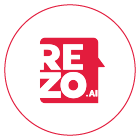
What is CSAT, How to Measure and Improve It

What is CSAT, How to Measure and Improve It


Have you ever wondered, while buying a certain thing you always recall a certain brand. This happens because of the satisfactory product and customer services delivered to you. To beat your customers and grow revenue, it’s important for any business to retain its loyal customers, deliver the customer services up to their expectations, and make sure that your customers are 100% satisfied and they are your biggest brand advocates. But the biggest challenge is how to ensure that your customers are happy and satisfied with your services? Here comes the concept of CSAT in customer service. CSAT, which stands for Customer Satisfaction, is a metric used to measure how satisfied customers are with your products or services. It involves asking customers specific CSAT questions to gauge their level of contentment and identify areas for improvement
What is Customer Satisfaction Score (CSAT)?
CSAT score, Customer Satisfaction Score, is a customer experience metric that is used to track how satisfied your customers are with the organisation’s product, services or customer support interaction.
According to Forbes, organizations lose $338.5 billion per year globally due to bad customer service.
Now since we have a fair understanding of what is CSAT, it is important to understand the components affected by CSAT ratings. Brands and marketers use CSAT rating scores to establish a customer’s level of satisfaction at specific interaction times, such as during a support ticket exchange, the moment of purchase, a phone conversation with customer service, or during the onboarding process.
Enhancing CSAT in customer service is vital for companies in today’s competitive business landscape. CSAT rating measures how satisfied customers are with their overall experience, products, and services provided by a company. It goes beyond just meeting customer expectations; it reflects their perception of the company’s commitment to quality, value, and customer-centricity. Improving the CSAT rating directly impacts a company’s reputation, customer loyalty, and bottom line. Therefore, companies that prioritize and invest in improving CSAT gain a significant competitive advantage in the market.
Read More: How Conversational Analytics Can Help Banks Better Understand Their Customers
Why is It Important to Measure Customer Satisfaction Score?

After understanding what is CSAT, the question is how to measure it and why to measure it? Here are some reasons to illustrate the importance of CSAT in customer service
Customer Feedback and Insights: CSAT calculation allows companies to gather valuable customer feedback and insights. By asking customers to rate their satisfaction levels, companies gain a deeper understanding of what aspects of their products, services, or customer interactions are working well and which areas need improvement. This feedback helps identify specific pain points, preferences, and expectations, enabling companies to make data-driven decisions to enhance their offerings and customer experience.
Performance Evaluation and Benchmarking: CSAT calculation provides a quantifiable metric for companies to evaluate their performance over time. By setting benchmarks and tracking CSAT rating regularly, companies can assess their progress in meeting customer satisfaction goals. This evaluation helps identify trends, patterns, and areas of improvement, allowing companies to implement targeted strategies to enhance their overall performance and align it with customer expectations.
Customer-Centric Culture and Continuous Improvement: CSAT calculation fosters a customer-centric culture within an organization. When companies prioritize customer satisfaction, it becomes ingrained in their values, decision-making processes, and operations. Regularly measuring CSAT signals a commitment to continuous improvement and an ongoing effort to provide the best possible experience for customers. This customer-centric focus encourages employees at all levels to proactively identify areas for enhancement and contribute to the overall satisfaction of customers.
Competitive Advantage and Differentiation: In today’s highly competitive marketplace, CSAT calculation provides a competitive advantage and differentiation for companies. By consistently delivering high customer satisfaction, companies can stand out from their competitors. Positive CSAT ratings and customer testimonials serve as powerful marketing tools, attracting new customers and retaining existing ones. Additionally, publicly showcasing high CSAT scores can enhance a company’s reputation, build trust, and establish itself as a preferred choice in the market, further strengthening its competitive position.
Read More: How AI is Helping Enterprises in Building Customer Trust and Loyalty
How to Measure CSAT?
CSAT scores are typically used to gauge how satisfied customers are with a company’s products, services, or interactions. Here’s how to measure CSAT scores of your customers-
- Surveys and Feedback Forms: Companies can implement post-interaction surveys or feedback forms that customers fill out after engaging with their conversational AI solutions. These surveys often include CSAT questions, asking customers to rate their satisfaction on a numerical scale (e.g., 1 to 5) or providing open-ended feedback.
- Net Promoter Score (NPS) Surveys: NPS surveys can help measure not only satisfaction but also customers’ likelihood to recommend the company’s products or services to others. This provides a broader picture of customer sentiment.
- Sentiment Analysis: The company can use natural language processing and sentiment analysis tools to analyze the text-based interactions between customers and the conversational AI. This can help gauge the sentiment of the conversations, whether they were positive, negative, or neutral.
- Customer Feedback Analysis: Analyzing customer feedback received through various channels such as emails, social media, and customer support tickets can provide insights into customer satisfaction levels.
- Customer Behavior and Usage Patterns: Analyzing customer behaviour, such as the frequency of interactions, the duration of engagements, and the types of questions asked, can offer insights into satisfaction levels, which can then be incorporated into the CSAT formula. Higher engagement and positive interactions may indicate higher satisfaction
- Real-time Monitoring: Some conversational AI platforms offer real-time monitoring of customer interactions, including CSAT questions. Companies can proactively intervene or address issues when negative sentiment is detected
- Benchmarking: Comparing CSAT scores over time and against industry benchmarks can provide context and insights into overall customer satisfaction trends.
- Integration with CRM Systems: Integrating CSAT data with Customer Relationship Management (CRM) systems can help correlate satisfaction scores with customer profiles, purchase history, and other relevant data.
- Data Analytics Platforms: Leveraging data analytics platforms, the company can aggregate, visualize, and analyze CSAT data to identify trends, patterns, and correlations.
- Machine Learning and Predictive Analytics: Using machine learning algorithms, the company can predict potential customer satisfaction issues based on historical data and proactively address them.
Calculating CSAT Score using CSAT Formula
CSAT Score = (Number of Positive Responses / Total Number of Responses) * 100
For example, if you received 150 responses and 120 of them were positive:
CSAT Score = (120 / 150) * 100 = 80%
This means that your CSAT score is 80%, indicating that 80% of customers who responded to the survey reported a positive level of satisfaction.
It’s important to note that the CSAT formula can be customized based on the scale used in your surveys (for example, a scale of 1 to 10), but the basic principle of calculating the ratio of positive responses to total responses remains the same.
Powerful Strategies to Boost Your Csat
Personalized Self-Service Options: Implement self-service options powered by automation, such as chatbots or voice bots. These tools can provide personalized assistance to customers, addressing their queries and guiding them through common processes. By offering efficient and accurate self-service options that align with the CSAT formula, customers can quickly find the information they need, leading to improved satisfaction and reduced customer effort
Proactive Customer Engagement: Leverage automation to engage with customers proactively, including CSAT questions. For example, automated notifications or personalized emails can be sent to provide updates on orders, service requests, or relevant information. Proactive communication, combined with gathering feedback through CSAT questions, shows customers that the company values their time and keeps them informed, leading to a positive experience and increased satisfaction.
Omnichannel Support: Implement automation tools that enable seamless customer interactions across multiple channels. Customers should have the flexibility to engage with the company through their preferred communication channels, such as web chat, social media, email, or phone. Automation can help consolidate and synchronize customer data across these channels, allowing agents to have a holistic view of the customer journey and deliver consistent and personalized support.
Smart Routing and Prioritization: Use the Smart Routing Engine to intelligently route customer inquiries or issues to the most appropriate resources, all while considering the CSAT formula. AI-powered algorithms can analyze customer data, categorize queries, and route them to the most qualified agent or team. This ensures faster resolution times, reduces customer frustration, and increases CSAT by providing efficient and tailored support.”
Feedback Collection and Analysis: Leverage our Voice AI agents for the collection and analysis of customer feedback. Implement surveys or feedback forms at key touchpoints in the customer journey. Automation tools can gather and analyze this data, identifying trends, patterns, and areas for improvement. This valuable feedback enables companies to make data-driven decisions, proactively address customer concerns, and continuously enhance their CX strategy.
Continuous Improvement through Data Insights: Utilize automation to extract actionable insights from customer data. Analyze CSAT scores, customer interactions, and feedback to identify pain points and areas for improvement. Automation tools can provide real-time analytics and reports, enabling companies to identify trends, make informed decisions, and implement targeted improvements to enhance the overall customer experience.
Personalized Recommendations and Upselling: Leverage automation to provide personalized recommendations and upselling opportunities. By analyzing customer data and purchase history, automation can suggest relevant products or services that align with customer preferences and needs. This personalized approach enhances the customer experience, increases engagement, and can lead to higher CSAT scores.
Customer Sentiments and Tone Analysis – Get valuable insights into customer emotions, preferences, and experiences through our powerful Sentiments and Tone Analyzer, all while focusing on CSAT in customer service. This tool can easily detect the customer’s intent and take action accordingly. This personalized and empathetic approach not only resolves problems but also creates positive customer experiences that lead to higher CSAT scores and long-term customer loyalty.
Leverage Rezo’s AI Agents to Increase Your CSAT

Rezo’s automation and analytics products improve CSAT which helps companies build a strong and positive reputation. Efficient Ticket Management to automated responses enables organisations to handle customer queries on time and provide quick and correct resolution. Incorporating sentiment and tone analysis into customer support processes enables companies to move beyond addressing technical issues and engage with customers on an emotional level. Our benchmarks serve as measurable targets and guide the company’s efforts toward enhancing customer satisfaction.
Frequently Asked Questions (FAQs)

Take the leap towards innovation with Rezo.ai
Get started now















